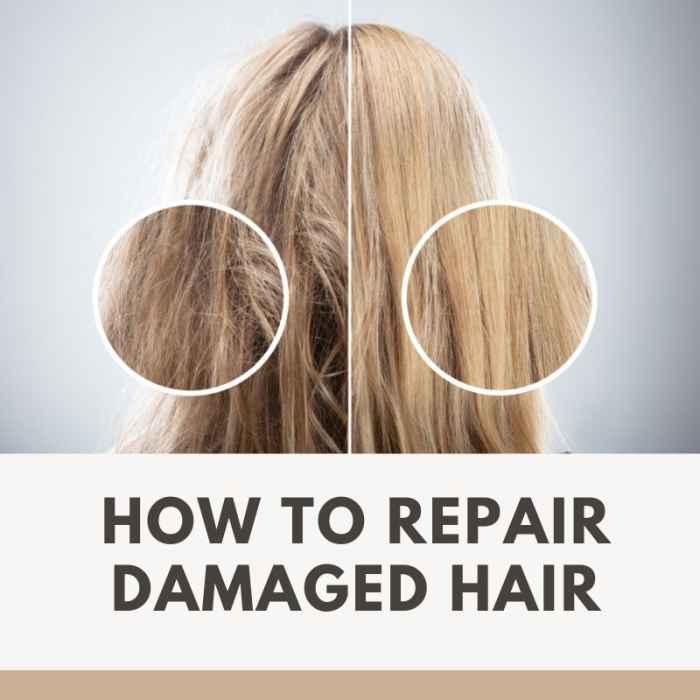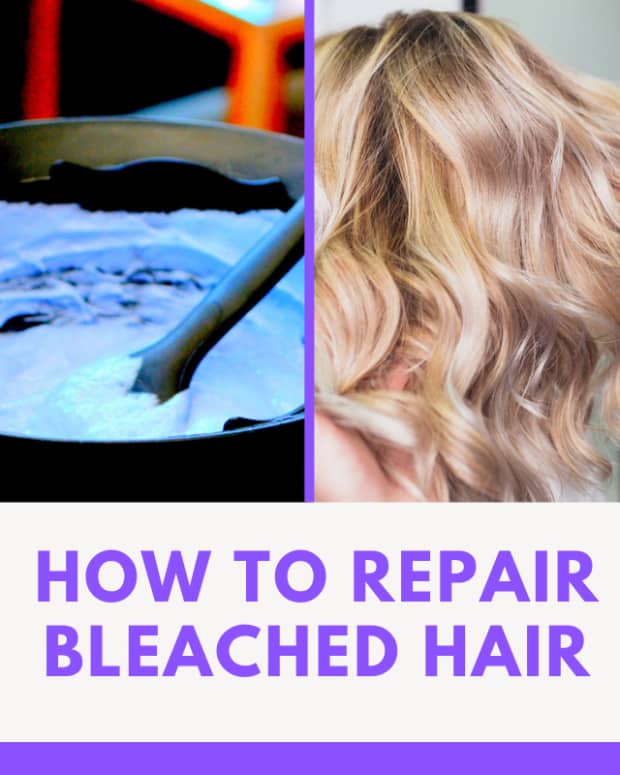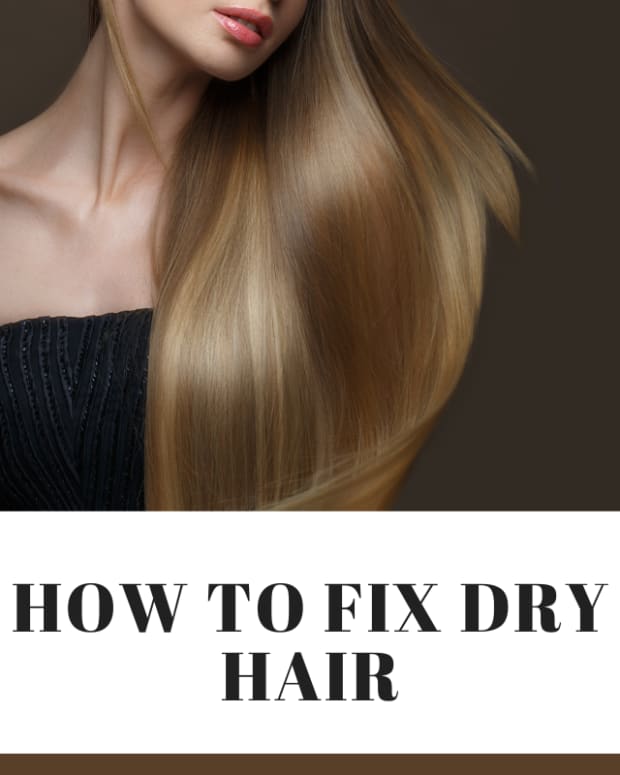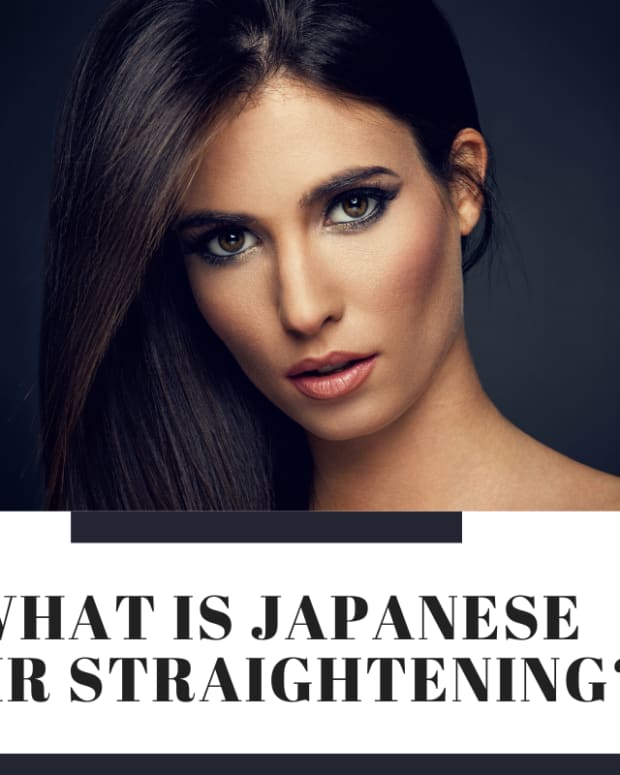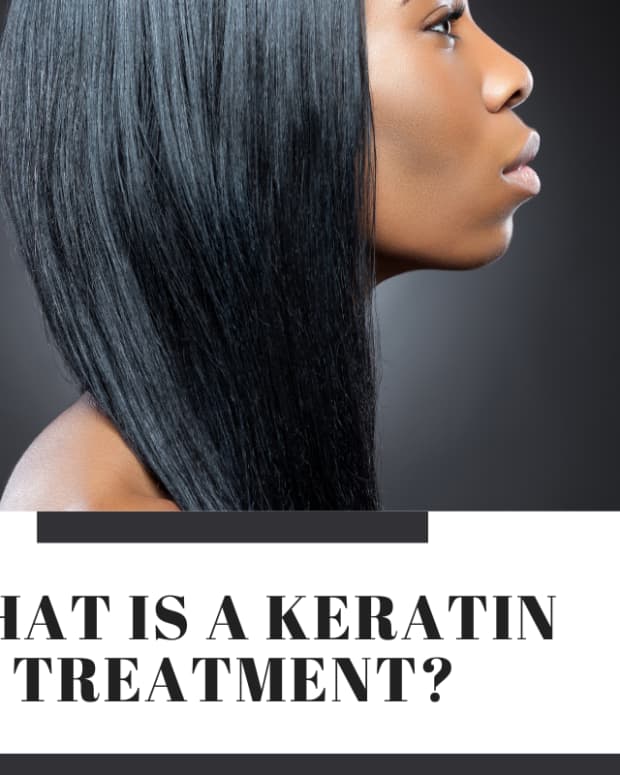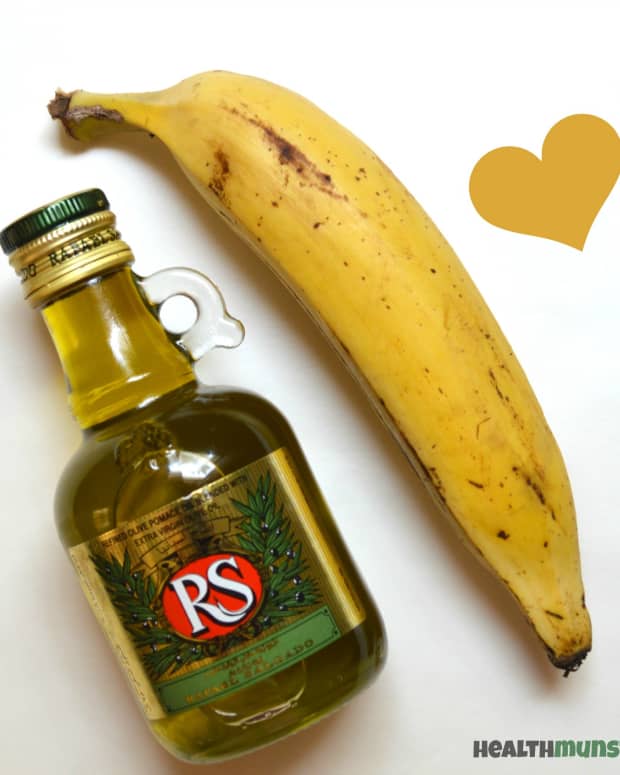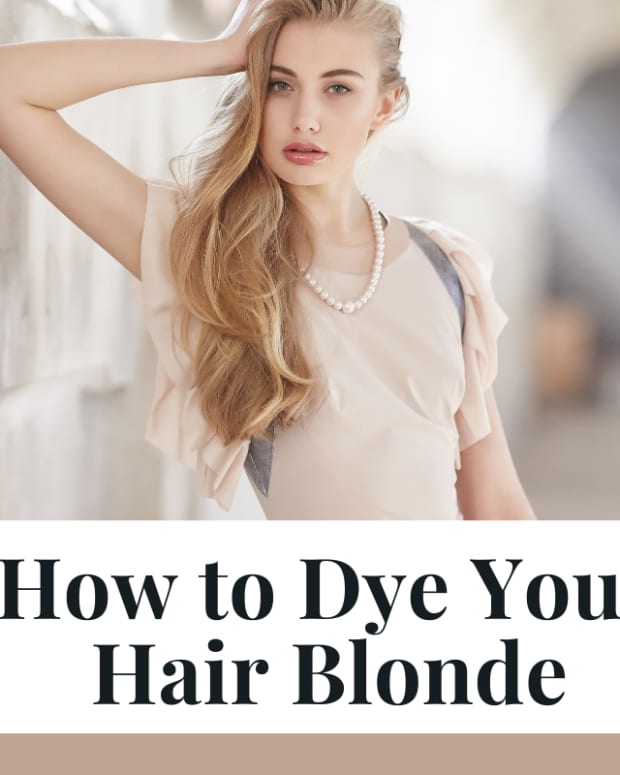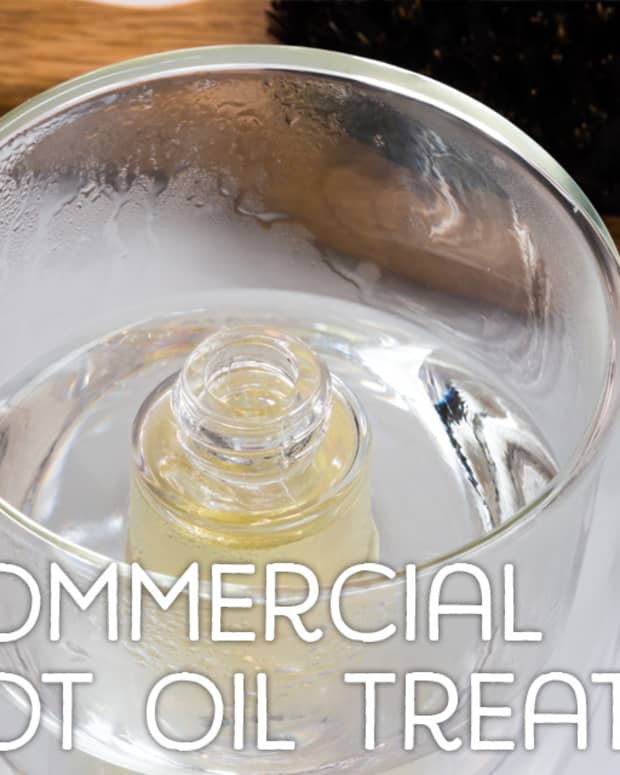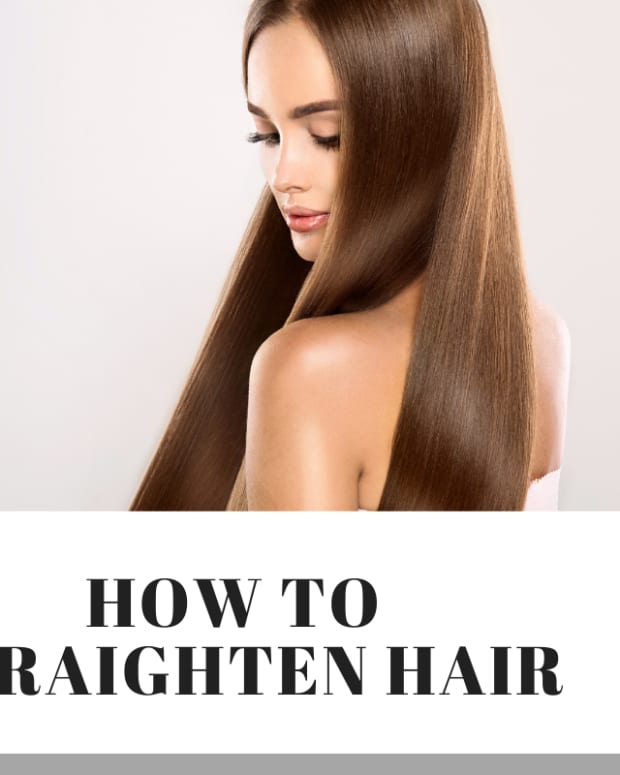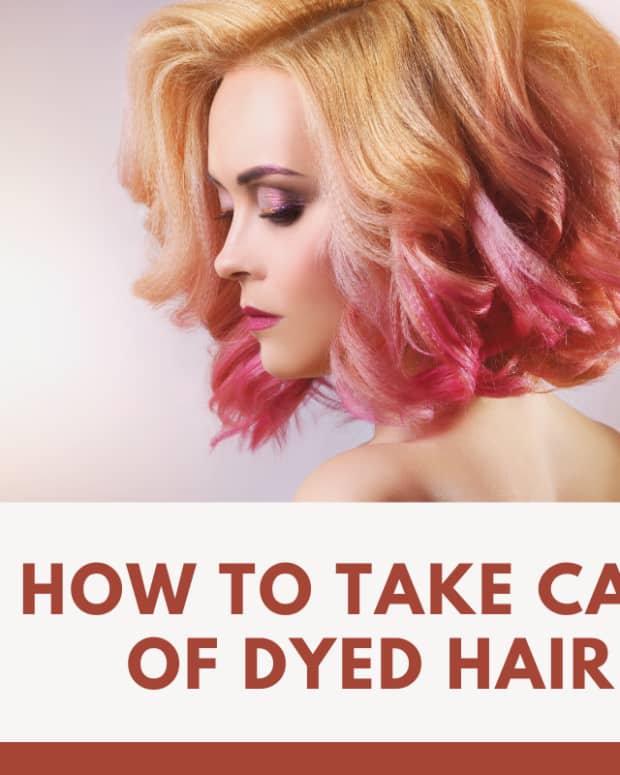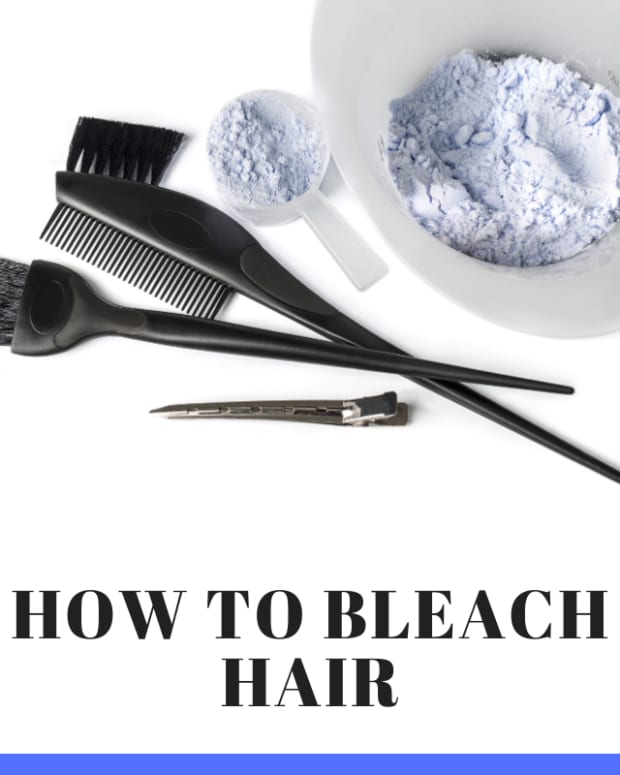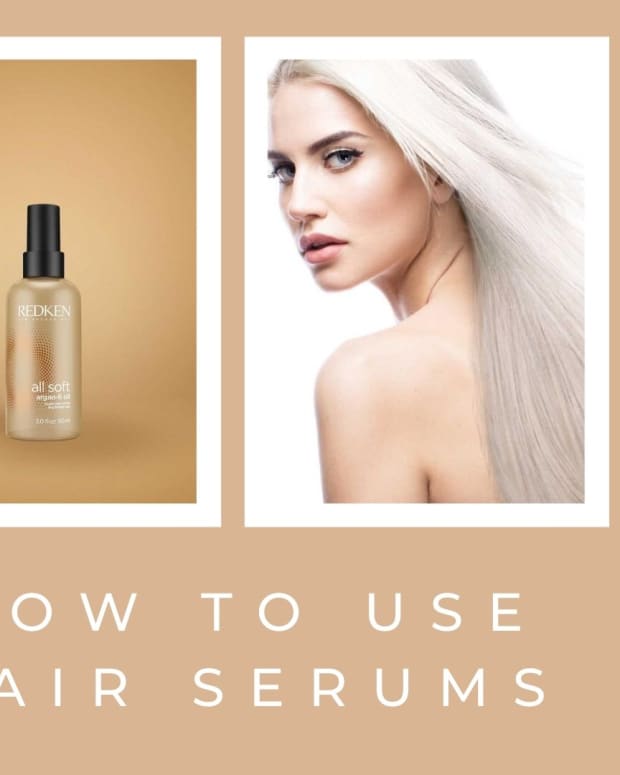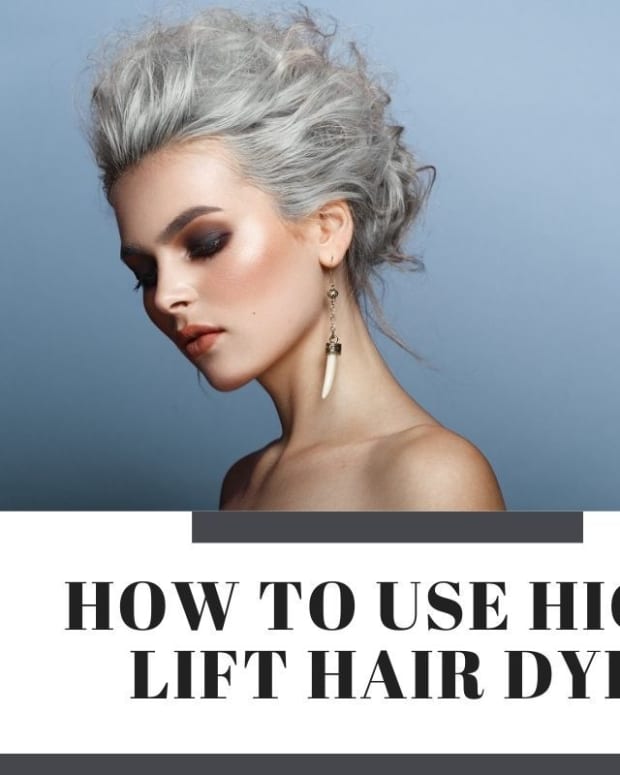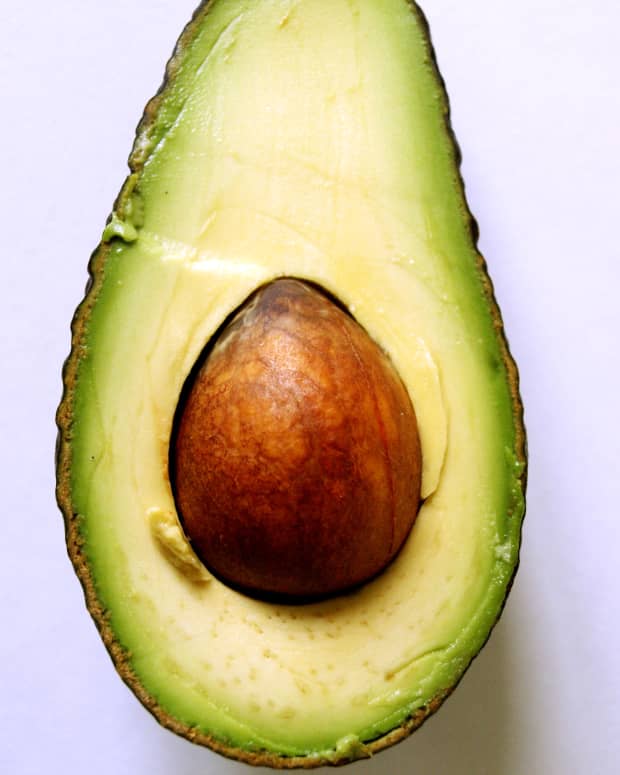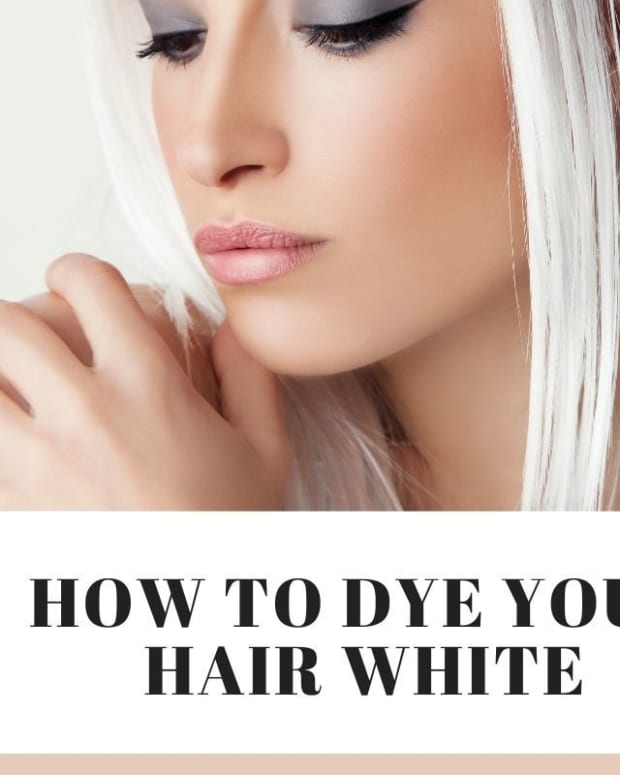How to Repair Damaged Hair Properly
Maffew is a hairdresser, marketer, and dabbler in many things who enjoys sharing knowledge about the science of hair coloring and hair care.
Damaged hair is common among people who dye their hair often or use heated styling tools. Every time you subject your hair to any form of chemical treatment, damage occurs to both the surface of the hair shaft and the deeper structure within.
Extensive lightening and perming treatments cause the most damage overall, but even minor dye jobs can lead to unnoticeable damage that gradually builds up and becomes more problematic with each successive treatment. Damage to your hair may seem like cause for alarm and stress, but it doesn't mean you have to necessarily cut it off and start again.
You can reverse even a serious disaster and keep your favorite style by knowing why the damage occurs and being able to use the right products and care routine to repair damaged hair back to good condition.
What Causes Damage?
The damage that occurs to your hair when you subject it to chemical treatment is a result of the hair's structural integrity being compromised. When the structure of the hair shaft is compromised, it can snap or form split ends more readily.
Hair needs a solid foundation, and the building block of your hair is a protein called keratin. Bleach and perming solutions damage your hair primarily by breaking down the bonds between the amino acids in the hair's keratin structure.
In the case of permanent hair dye and lightening preparations, this damage is an unintended side effect of the oxidation reaction and the alkaline environment that is needed to drive the chemical reaction to lighten the hair. Perming and relaxing treatments, however, aim to intentionally break bonds in your hair and reset them to change your hair's texture.
While these new bonds lead to curlier or straighter hair depending on the way the solution is used, they are weaker than the natural bonds that were reset. The very nature of current hair treatments means you can't color or texturize your hair permanently without causing at least a little damage.
Minimizing Damage
You can't always avoid causing damage to your hair in the first place, but there are a few tips you can follow that will help to minimize it and keep your hair in better condition.
- Avoid overlapping dye or bleach on top of hair that has been previously treated. Only the regrowth should be processed when you maintain your current color.
- For previously dyed hair that has faded, revitalize your color with a semi-permanent dye, temporary rinse, or using a colored shampoo. This will reverse fading without causing further damage.
- Don't bleach hair that has been permed or relaxed, and vice versa, don't perm or relax hair that has been bleached. Consider alternative ways to curl or straighten your hair.
Types of Hair Damage
In order to repair damaged hair, it's necessary to address the specific type of damage that has occurred. Primarily, this damage consists of:
- Damage to the hair cortex
- Damage to the cuticle
- Stripping of the hair's natural oils
What's the Difference?
Most chemical treatments leave your hair feeling dry, rough, and brittle. This isn't necessarily actual damage to the hair structure, but it does leave the hair more prone to snapping and splitting because the hair lacks the necessary moisture to maintain adequate flexibility and elasticity.
If you've just bleached your hair and it feels terrible, this is normal to some degree because the natural oils that moisturize your hair have been stripped out by the alkaline pH of the bleaching solution, drying it out more than would ever naturally occur through washing. Before you panic and decide your hair is ruined, allow it to rest.
Condition your hair thoroughly with a deep conditioner and don't wash it again for a few days. In most cases, as the oil begins to build up again, your hair will begin to return back to normal and you'll see that it wasn't very damaged at all.
If, however, you're suffering breakage and split ends that won't respond to conditioning, this is a tell-tale sign that your hair has actually been compromised. You'll need to address this with more a targeted treatment to repair damaged hair.
Structural Damage to Hair
When the condition of your hair deteriorates, it has either suffered damage to the cuticles that line the surface of the hair shaft, or the cortex which lies inside the shaft and gives the hair its form and strength.
Read More From Bellatory
Damage to the cuticles is superficial and manageable, mainly causing moisture problems, a rougher texture, and porosity, while damage to the cortex causes your hair to break easily, and fall apart when subjected to stretching or pulling. As this kind of damage within the cortex is due to broken disulfide bonds, it can also cause your hair to lose natural curls or waves to some extent and this is a telltale sign that your hair isn't in the best condition anymore.
The same processes that cause damage to the cortex also tend to damage the cuticles, so typically you'll notice some degree of both if the amount of damage has become significant.
Hair Diagnosis
| Condition | Symptoms | Treatment |
|---|---|---|
Dry hair | Hair is rough, feels brittle, may break, and doesn't style properly | Reverses with conditoning |
Weak hair | If hair is properly conditioned yet breaks, suspect damage to the hair cortex | Structural repair with protein treatments |
Porous hair | Porous hair sucks up hair dye, but fades rapidly. It doesn't hold moisture and suffers from extreme humidity. | Smoothing serums, porosity equalizer, leave-in conditioners |
Cuticle Damage
The cuticles of your hair are the windows into the deeper structure of the cortex, holding moisture where it's needed and protecting your hair from the environment. When the cuticles are damaged, the hair loses moisture easily and will suffer more readily in situations of low or high humidity. In this state, the hair is said to be porous.
What Is Porous Hair?
Porous hair can occur naturally to an extent in some people, but for the most part, it is a result of damage to the cuticles. If your hair is porous, the best indication is that it absorbs hair dye really well, yet fades unexpectedly fast. This is because the cuticles are meant to seal the inside of the hair tightly against the outside environment and damaged cuticles no longer perform this function.
Cuticle damage can also cause your hair to feel dry and rough, and it will be more prone to split ends and frizz. This occurs because the damaged outer layer can be jagged and doesn't smooth down over the hair surface the way it would in healthy hair.
Repairing Damage to the Hair Cuticles
Hair cuticles can't be replaced once broken down, but the symptoms can be controlled relatively easily. To combat dryness, always condition your hair after you've shampooed it, and follow this up with a dab of leave-in conditioner for more stubborn dryness. Adequate conditioning is all that's required to cut down a lot of the frizz and prevent brittleness that can lead to snapping.
Protecting your hair from the environment is also a simple matter, and can be accomplished with the use of smoothing serums. A good smoothing serum will coat the hair shaft, trapping moisture and locking it in where it's required.
When a smoothing serum has been applied, the hair shaft is coated and forms a barrier and humidity isn't able to drastically affect your hair. It functions a little like an artificial cuticle to keep the hair looking and feeling its best by maintaining the correct moisture balance.
Finally, when you dye hair that has suffered cuticle damage, the porosity often leads to uneven results. To prevent this, always treat your hair with a porosity-equalizing product before you apply any dye. Porosity equalizers are designed to fill gaps in the structure of your hair, saving you from having sections of porous hair that turn out darker than the rest of your new hair color.
Porous Hair
If your hair sucks up hair dye yet fades quickly, often feels dry, and reacts badly to humidity, it's likely you're dealing with porous hair. Hair that is porous requires a good conditioner, and smoothing serum to lock in moisture and protect it from the environment.
Structural Damage
Damage to the hair cuticle is superficial and rarely causes a serious problem, but the same can't be said when there is damage to the hair cortex. This damage is structural and the integrity of the hair suffers.
Hair that has sustained damage to the cortex breaks easily, forms split-ends, frizzes up readily and doesn't hold up to styling.
How to Tell If Your Hair Is Damaged
You'll likely know if you have structural damage because you'll notice how easily your hair tends to break, and hair that was previously smooth can look like a frizzy mess.
One of the easiest ways to determine whether structural damage has occurred is to examine it while it's wet. Hair is at its weakest when wet, and hair that has been damaged will snap or even stretch apart when handled. If your hair feels strangely fragile when wet, there is damage to the hair structure.
Very damaged hair may even seem to melt under pressure and this is a bad sign but often still fixable.
Repairing Structural Damage to Hair
To repair damaged hair when the cortex is compromised, the protein in your hair needs to be strengthened. No amount of conditioning will help relieve the problem because conditioners only act to relieve dryness.
Hot oil treatments, moisturizing masques, and most 'repair treatments' are useless for this purpose if all they do is condition the hair. Hair like this will only respond to a protein treatment.
Protein treatments work to replace the damaged protein in your hair structure. It is this damaged protein that leads to its fragile state. Products like Joico K-Pac Reconstructor and Redken CAT treatment will noticeably improve damaged hair even with single-use, and this effect builds up over time.
For the best results, use a protein treatment that actually includes amino acids, rather than whole protein. In particular, the amino acid arginine is one of the most effective substances for improving the strength and condition of your hair. When arginine comes into contact with the damaged protein in your hair, it bonds to the hair structure to reinforce it and increase the structural integrity.
If all else fails and you believe your hair is beyond saving, keratin treatments are a last line of offense. Your hair is made of keratin protein, and keratin treatments restore hair using hydrolyzed keratin to create new bonds in the hair.
These treatments help to replace the damaged protein and repair damaged hair to its former condition. They can even be used to straighten hair without the damage of a relaxing solution.
Keratin Treatments
Keratin treatments are a great way to repair damaged hair and they can even be used to straighten hair that is naturally curly without causing damage. Many hairdressers offer this treatment, and you can even apply a keratin treatment in the comfort of your own home for little cost.
How to Apply a Keratin Treatment
Most keratin treatment products are designed to be dried into shampooed hair and then straightened or curled at high heat to set the hair into the desired shape. While you can definitely use it to perform this function and repair your hair at the same time, there are also slightly modified products designed to have less of an effect on your hair's texture whilst preserving the hair repair benefits of the treatment.
To apply a standard keratin treatment, you need to shampoo your hair twice with a clarifying shampoo to strip out minerals and oils that might otherwise impact the treatment. Then, apply the treatment to towel-dried hair and blow-dry it using the concentrator nozzle and a brush to focus the heat downwards from root to ends and smooth out the hair.
If you have curly or wavy hair and want to maintain or improve this texture, you can use a diffuser attachment on your blow-dryer instead and dry it that way. Alternatively, you can just add controlled texture using a straightener or curling iron in the next step.
Setting a Keratin Treatment
After applying a keratin treatment and drying it into your hair, the process isn't entirely finished yet. The treatment needs to be set into the hair at high heat using a styling device capable of reaching 230° Celsius.
Use this tool to either slowly and flawlessly straighten or curl your hair the way you want it to look, then leave this style in your hair for two days before you wash your hair again because the new bonds that are formed by the process continue to form over this time. You can wash the product out after this period is over, and style your hair as usual.
Benefits and Drawbacks of a Keratin Hair Treatment
Keratin treatments can save even heavily damaged hair most of the time but they do require a lot of work to apply and don't last forever. As such, they need to be maintained with repeat applications approximately every two months to maintain texture in your hair.
However, a lot of the damage restoring benefits from a single treatment will continue to remain even months after one treatment.
- What Is a Keratin Treatment?
Want to know more about keratin treatments? Read my related article here.
Olapex
Olaplex was launched after I originally wrote this article and the product built a quick, steady following. It's now used in salons across the world and the manufacturer has a patent for the product's active ingredient addressing how it works, as well as the positive reports of millions of people who have had it used during their coloring treatments.
How Does It Work?
The Olaplex line—as well as other similar products that have been released in recent times—contain an ingredient that caps onto broken bonds within the hair and protects these bonds from the effects of bleach or dye during chemical treatments. This works to prevent the hair from becoming damaged in the first place.
While this is incredibly beneficial to use during any color service, it's important to note that it's going to be a less helpful product if you already have damage because it's better at stopping damage from occurring than it is at repairing existing damage, although it will work for that purpose too.
Repairing Damaged Hair With Olaplex
If you already have damage then—besides using a product like this whenever you color or lighten your hair in the future—you can use Olaplex No.3 as a standalone treatment to repair damaged hair at home.
This product has a lot of the benefits of the No.1 and No.2 that are used during chemical treatments, although those variants are stronger because they address the moment when the damage is happening directly. The entire line is more expensive than other products though owing to its success and the hype surrounding it so keep that in mind if you're on a budget.
More Information
- How to Use Hair Serums
Hair smoothing serums have a multitude of benefits. Find out what they are and how to use them. - Caring for Dyed Hair
Dyed hair needs specialized care to keep it looking and feeling its best. Find out how to care for dyed hair and maintain your new color. - How to Choose a Shampoo
If your hair is damaged, it helps to use the right shampoo. Find out how to choose a shampoo that will benefit your hair.
If you need to repair damaged hair, the most important thing to remember is that it's not the end of the world. In most cases, you can reverse damage to your hair, or at least alleviate it to the point that it isn't a significant problem.
Do you have a question about how to repair damaged hair, or need help using protein treatments or other products? Leave a comment for tailored advice.
This content is accurate and true to the best of the author’s knowledge and is not meant to substitute for formal and individualized advice from a qualified professional.
© 2014 Maffew James
Comments
Karen Hester on June 26, 2019:
What Shampoo and Conditioning product would be best for hair that has had the keratin stripped from it? The deep conditioning or deep repair products are recommended but I do not see a Shampoo & conditioner product. My hair is severely over processed. I am furious of course, yet I know that I have to work diligently to replace the keratin. I am familiar with K-pac , I knew Redken had a great product but didn’t know the name-thank you. I have an array of professional products- stick with Matrix as a Rule. And always use Matrix Color Care Shampoo & Conditioner. Taking excellent care of my hair is not a new thing to me. I however do have my doubts that the Hairdresser I had will ever be successful. I have reported to the State Boards and submitting a formal complaint with pictures.
I even had a 40 minute consultation the day before my appointment. WOW, just wow
Subashni on February 12, 2018:
I have dried and brittle hair..
I combined coconut..olive and castor oil...left it on for 5 hrs everday for 3 weeks...
I even put few drops off coconut oil in my conditioner
Shampooed and left the conditioner on...
I got no joy what's so ever..
My hair is still brittle and dry
Can someone please help...
My hair don't even grow..
It gets stumped at my neck..
I have tried all the home treatments that I googled..
It just don't work ...
I need help fast as I'm in my early 50's..
Trisha on February 02, 2018:
I used a fixed hair stripper on my hair 2 yrs ago & it's still breaking. My self esteem has plummeted. Help
Fay on August 30, 2017:
I put a perm in my hair and then I bleached It 2 times and died it my hair is falling out and I don't know what to do should I cut it all off or?
Ze on August 21, 2017:
I burned my hair with a relaxer and I just can't even brush as it is rubbery and gets broken and fall in peices and looks and feel burned, anything I can use or do to make it better ?!
Rita on July 27, 2017:
I am 68 and my hair is grey and turning fast. It has become fine and matted like wet cotton and is starting to "turn out" as it dries instead of lying smooth as it always did. I do not use any hair color products and never have. In just under three years my hair has turned from a little grey to about half grey with terrible texture. I take vitamins and minerals including biotin and have done this for years. I lost my husband about the time my hair started to change. Is it stress or something else?
Jessica on July 23, 2017:
Stay away from coconut oil like the plague. I tried a coconut oil recovery shampoo after a perm made me lose a bunch of hair. It thinned it more and more. Look up lauric acid hair growth inhibitor and don't believe these websites saying it's good. Some corporation wants to buy coconut oil color perm damage your hair so that they can capitalize on your suffering by selling you more and more hair loss solutions that don't work.
Mary Hayes on July 15, 2017:
I just tried to straighten my hair with a home perm solution and it didn't do what i wanted to but it also left it dry and sticky and every time I brush it hair comes out. What do I do? I put leave in conditioning in it but didn't help
Aysha sajid on July 02, 2017:
Hi I done chemical straightening and after one week I coloured my hair and after that my all hair cut in a pieces from almost near to roots now my hairs like half long some short some no hairs from the roots means very bad condition pleas please suggest me something what should I do ? Thanks
Youka on June 20, 2017:
I'm pretty sure I have structural damage after using permanent Yuko hair straightener and I'm freaking out! Could I please get some more detailed instructions on what to buy as far as protein and how to use it?
Thank you so much
broken hair on June 20, 2017:
Ok so I striped my hair and I think that I have both cuticles and structural damage. So far I have used a deep conditioner and it has gained a grease feel to it but I am not sure if it helped. My hair still looks and feels like straw. What do I do?
Demage by silicon mix on June 13, 2017:
Hello, I had a keratin treatment 3 weeks ago and my hair was soft and frizz free. Two days ago I washed it and used a bambú silicon mix and my hair became kinda dry and frizzy, I washed it again with a keratin shampoo and still the same. What can I do to fix it? :(
Thanks
Brandi Mann on June 09, 2017:
A few years ago I went from light colored hair to dark . I stayed that way for a few years dyeing my hair. About a year ago I wanted to go back light. I had a hair dresser do my hair and she pretty much fried it. Which I know that is the risk you take when you go from dark to light. Every since then my hair hasn't looked healthy. I have tried the coconut oil along with other oils. I had a friend recommend Olaplex #3 to use along with some moisture and protein treatments. Can you recommend some products to use for this or have any advice?
Himani on April 29, 2017:
I had severe hair structure damage after using hair relaxers .....Got done keratin treatment as well ...could not get the results ...still having dry and unmanageable hair
Asma on April 09, 2017:
Hi dear
Thank you for very informative articlei live in Jordan..... The Same damage other talk about happened to my hair as a result of wrong keratin try and bleaching.... I want to ask you please.... About the formulas for treating damaged hair proteins... How can I get them... Thank you again
Yasmine on January 18, 2017:
Hey ive had my hair bleached a few times and this last time my hair has really been damaged from bleach. It is so hard to manage and my hair has snapped from the crown of my head. Also when its wet is feels mushy so i cant brush my hair. Can its been repaired as i am planning to get a pixie hair cut although i dont want to but if it can't be repaired then i would rather have short manageable hair that long disgusting hair.
Cammi on January 17, 2017:
Hey, So I am not sure I am knowing what to do... my hair used to be really curly naturally. I loved it, hardly ever did it because it was already done. But over some time it just got so frizzy looking, it feel rough and I am not sure what happened. It just breaks off.. my hair doesn't look good ever, it looks dry and it doesn't lay right, especially in a pony tail, it sticks out and in a clump when its up. do you have any ideas? It is really stretchy and fragile when wet and brittle when dry. I'm not sure what else I should do for it.
Sherrie LaFrance on November 25, 2016:
Kimberly~I'm a 4C also. mixed race, and had a similar thing with my hair (you said it perfectly -- loofah, chore boy). But I've been doing keratin treatments for 2 years (Uncurly.com) and my hair is now in great shape and past my shoulders. I don't think it actually grows faster but the breakage has stopped and the shrinkage is much less.
zahra sadaf on September 11, 2016:
HI, so i dye my hair a few days ago and the day after i dye my hair again because the dye didn't really colored my hair before i dye i had volume, thick hair but after I dye( i lost half of my hair with no joks plus very thin and so many broken small hairs every part of my hair) my question is will my hair go back to what it was before i really want my thick hair back and how long will it take?I'm just so depressed about it I wish i never dye my hair but i learnt my lesson.
Mirou on July 28, 2016:
Hi it's been now a year since i bleached my hair but it was a catastrophe my hair was very damaged it became gummy once i washed i can't even put my fingers into it i did many natural hair mask but i cutted a month ago and the ends still breaking and gummy help me plz
Kimberly on July 10, 2016:
I was told my broken bonds are broken and irrepairable. I am AA with 4c hair. My hair looked like a loofah at first then changed to a chore boy like kitchen gadget, and then it was just ugly dry like a frayed electric cord. So I cut off down to the scalp and get monthly treatments. Unfortunately, it doesnt grow. It just looks like a rough chia pet head. is it true that once the bonds are broken thats it for your hair, and what can I do to get healthly hair or some length again
Maffew James (author) on June 09, 2016:
Hi Monisha,
Was that a relaxer or keratin treatment that was used to straighten your hair? Relaxer is permanent, whilst a keratin treatment washes out of the hair over time. If relaxer was used, it is possible for there to be some weakness where the relaxed hair meets new growth because the process causes damage, so this is where you may see snapping, as well as towards the ends of your hair where the hair is older and often has been previously processed in the past with other treatments like dyes.
As for a keratin treatment, this shouldn't cause any snapping and will generally increase the strength of your hair while the treatment is still in. You may see your hair become more fragile as it rinses out over time because weakness is being uncovered and isn't bolstered by the keratin, which binds to damaged areas of the hair.
In any case, whatever the actual cause of the breakage, smoothing those hairs out now can definitely be difficult. As they are shorter, this does give them a tendency to flick out when drying because the hair is less likely to sit straight. One of the ways you can try to avoid this during the drying process itself is to blow dry your hair using low heat with a concentrator attachment on the end of the blow dryer. This will direct the air flow to prevent hair flying everywhere and allow you to brush through sections of a hair, directing the blow dryer from root to tip of each section to get it to dry smoother. A hair serum applied to towel dried hair before you blow dry will help with this a lot and will also help to prevent your hair drying out and becoming more frizzy.
Blow drying your hair carefully and in sections rather than letting it just dry naturally however it wants should take care of most of the frizz and flyaways at the crown, but if it still bothers you even after doing that, the best way to deal with it really is to straighten or curl it with a flat iron or curling rod depending on the look you'd prefer. Products like mousse and conditioning masks go a long way towards preventing frizz and flyaways, but when the problem is severe, it can often only be worked out during styling with heat. The reason for this is that whilst the products for this purpose help to prevent dryness and thus frizz, or serve to add hold and weigh down hairs that flick out, heated styling tools will actually set that hair into the desired position and shape more effectively if nothing else seems to work. It does require more time to style your hair though, and you may find that a serum and blow drying in sections, maybe with a little mousse for added hold, suits you fine for regular wear and you can use a heated tool to get your perfect style when required.
Another thing I'd recommend is a good protein treatment like Redken Cat or Joico K-Pak Reconstructor, as this will help reduce further breakage that would make the problem worse over time. You can apply these products after shampooing, and before conditioning, leaving for a few minutes to absorb. Once a week should be fine at first, and you can increase or decrease your use depending on how strong your hair is feeling.
One last alternative, for the frizz in particular, is to have a keratin treatment applied. You can use a keratin straightening treatment, or one of the newer keratin products that cause less of a change in texture and will soften but not eliminate your curl. This will treat the frizz by adding strength and smoothness to your hair, but if it was a keratin treatment used in your hair for straightening previously and you believe this lead to the snapping, don't consider this option again because it may yield the same result, though given that you said the previous treatment was chemical based, it was probably relaxer. In any case, a keratin treatment will reduce the flyaway hair at the crown slightly, but not drastically. It's more indicated for frizz, whereas the flyaway hair really needs to be treated with correct drying and styling to minimise it properly.
Monisha gowda on June 06, 2016:
Hello, I'd really appreciate it if you could answer a question for me. I'll be as brief as possible.
A year and a half ago I got a Loreal smoothening chemical treatment done to make my hair straight. The straightness of about 3/4th my hair is now gone and my hair is naturally wavy. I've noticed for quite a while now that the hair at the crown has been breaking off and everytime I wash my hair it stands up and looks like I have halo around my head. I've tried many types of conditioners and masks but nothing smoothens those tiny hairs. My hair is frizzy too which contributes to everyday being a bad hair day for me. Would you please recommend some sort of treatment for this?
Yary on May 22, 2016:
These past few months I have been very unforgiving to my hair. To the point where my hairdresser, after my coloring yesterday, told me that I should not process my hair in a very long time. And she is right; after the latest job I felt my hair and it was a bit gummy I guess. I was trying to achieve a color and it seems like they can never get it right. :( She sold me the Redken Cat treatment which I plan to use in a few days after my color settles. But I still would like to go just a bit brighter (red... by brighter I mean vibrant but not Arielistic). I feel sad like its the end of the road for now to achieve the color I wanted. I've heard of Olaplex but don't really know if I should just try the Redken Cat, or the Olaplex (someplace other than my usual salon since they don't offer the treatment) or do one & followup with the other. Do you know if Olaplex can restore structurely damaged hair??? Should I try that & then followup with the Redken Cat?? I'd appreciate your knowledge on this. Great article by the way. :)
Melissa on May 02, 2016:
Hi, Your article was very informative. I had my hair highlighted and the colorist over processed my hair She made the highlights white light instead of golden blonde. She put my under a heat lamp 2x for 10 minutes each time. My hair is breaking and falling out around the frame of my face and around my head. My hair feels very dry like hay. I have been using an Aveda moisture mask but it hasn't been working. Should I switch to Redken CAT or Joico K Pac? If I use one of these products will my hair continue to fall out or will it stop the breakage? I am looking to restore my hair's texture and stop the breakage.
mariposa on December 18, 2015:
Well you can't really "undo" the damage, just keep getting trims until all your hair is healthy again :) I had a REALLY badly damaged hair like you (same story), and until my hair grew out, I was using the Shielo Smoothing Conditioner - this really helped restore the damage in like 2 days! I highly recommend them - Shielo Smoothing Conditioner - works miracles on damaged hair.
My mom recently also got a bad keratin treatment....she is now using all my Shielo Conditioner, but its restoring her hair!
Maffew James (author) on November 16, 2015:
Hi Daisym,
Thanks for the product recommendation. I had a quick look at it and it's a silicone serum. I like serums like this because they're very good for frizz, dryness, shine, and protection from heat styling and humidity. However, I don't believe it has any major reconstructive properties to it; there's no protein ingredients, which repair structural damage. Overall, a good option for you if you like that brand and have hair that is troublesome to style, or like to use straighteners and curling rods often, but I wouldn't recommend it for heavily damaged hair. It's more the kind of product you use to prevent damage and dryness, rather than reverse damage that is pre-existing.
Wizmo on November 05, 2015:
Hi,
Very useful and informative article.
tash on October 16, 2015:
Hi.
I've been bleaching my hair platinum blond for a couple of months now. By bleaching twice and then applying an ash blond to neutralize the last yellow. My natural colour is medium brow and my hair is wavy. But since I went blond my waves disappeared. My hair was in a good condition. I deep treat once a week and uses the tressame platinum strength range. (Its the best we have here in South Africa) so last week I got this silly idea to perm my hair to get my waves back (I miss them) big mistake!!!!!! The perm didn't take and my hair is all sticky and elastic. I cried when I felt it. I was in a flat spin and immediately put some coconut oil on my hair and left it in for a couple of hours. My hair is less sticky but is still in a very bad shape. I seriously need some help to at least try and save them. Cutting short will be my last resort, short hair really don't suit my face.
daisym on October 16, 2015:
I have always been very protective over my hair - one day, I decided to get it relaxed, just to see and of course my hair immediately started thinning out at the front. My hairdresser suggested the Shielo Shine Restoration Oil and having read some reviews I decided to try it.
I must say, having used the Shielo Shine oil for only 2-3 days twice a day, the hair started growing back immediately, so much so that my mother even noticed it. Now it has been a couple of weeks, and my hair is longer than it was before. And its super shiney. ..it should work for your damage as well
Maffew James (author) on August 10, 2015:
Hi Colleen,
I'm glad you liked the article, and thank you for the kind words.
Colleen Diemer from Florida on August 02, 2015:
I went to school for cosmetology. I was a hairdresser for a few years. This is an excellent article. I know some hairdressers that do not know all this. Very good article. I loved it. Thanks for the great information. Colleen
Maffew James (author) on June 19, 2015:
The stronger ones like Joico K-Pak Reconstructor, or Redken Cat are excellent and will quickly add strength back in. You can use these after shampooing. Otherwise, even if you just switch to a shampoo that contains protein, this can help. Shampoos like this will say something along the lines of 'hair repair', 'repair shampoo', or 'for damaged hair'.
You can also work out whether it contains protein by looking at the ingredients. Ingredients like hydrolysed protein, wheat protein, and keratin are all forms of protein that are often added to repair shampoos and will strengthen hair after a few weeks of use.
Kris on June 19, 2015:
Thank you so much. What kind of protein treatment would you recommend?
Maffew James (author) on June 19, 2015:
Hi Kris,
You shouldn't see any damage occurring to the follicles from dyeing your hair. If your hair is weakened from the dye, it's possible that the breakage is what is causing it to look thin because it can break as it grows, causing the illusion that it isn't actually growing. There's also the chance you may have had an allergic reaction to the dye, but you probably would have known if you did as usually you'll experience other symptoms like itchiness and a rash and the allergy symptoms shouldn't persist for too long after dyeing anyway.
The best treatment at this stage is going to be to use a protein treatment to help decrease breakage so that it can grow properly without snapping off, and possibly look at your diet and make sure you're getting enough protein, vitamins, and minerals. Protein in your diet is most important here because it is what your hair is comprised of and a deficiency will result in weak hair. If the problem still persists after the dye has grown out, you'll be best going to see a trichologist. This is a doctor that specialises in hair growth and follicle conditions and they'll be able to tell you if there's a medical condition causing the thinning.
Kris on June 19, 2015:
Hello. I used a permanent dye on my hair and I believe the cuticle has been damaged because my hair is definitely weak and breaks fairly easy. But I also noticed that my hair is a bit thinner on top. Could this be permanent damage to the hair follicle or is it just dormant? And Is there any method I could do to stimulate it to grow again? I would greatly appreciate the help. It's been a few months this way with no signs of it thickening again.
Maffew James (author) on December 15, 2014:
Hi Wavy Lady,
Keratin treatments repair and straighten hair, but if you want to retain your curl, I'd suggest using a regular protein treatment instead as even a mild keratin treatment will cause some loss of curling.
Feel free to let me know if you'd like more information about protein treatments and I'll explain how they work and how to use one.
wavy lady on December 14, 2014:
Hi. I noticed in your article it stated kertain treatments can be used to straighten hair.
I have wavy hair that is damaged. Will kertain take away my curls? I would lile to keep them.
Thanks

